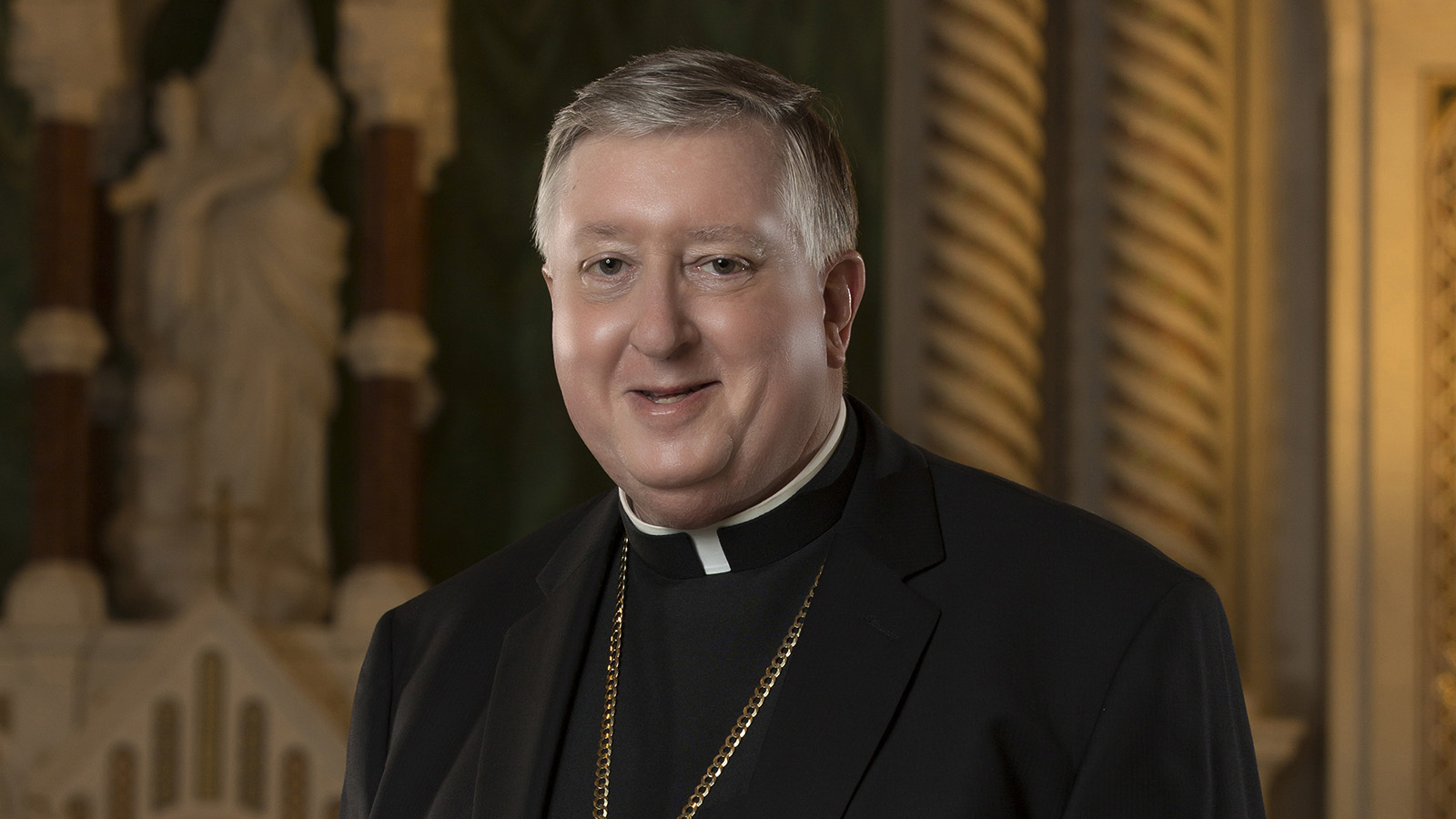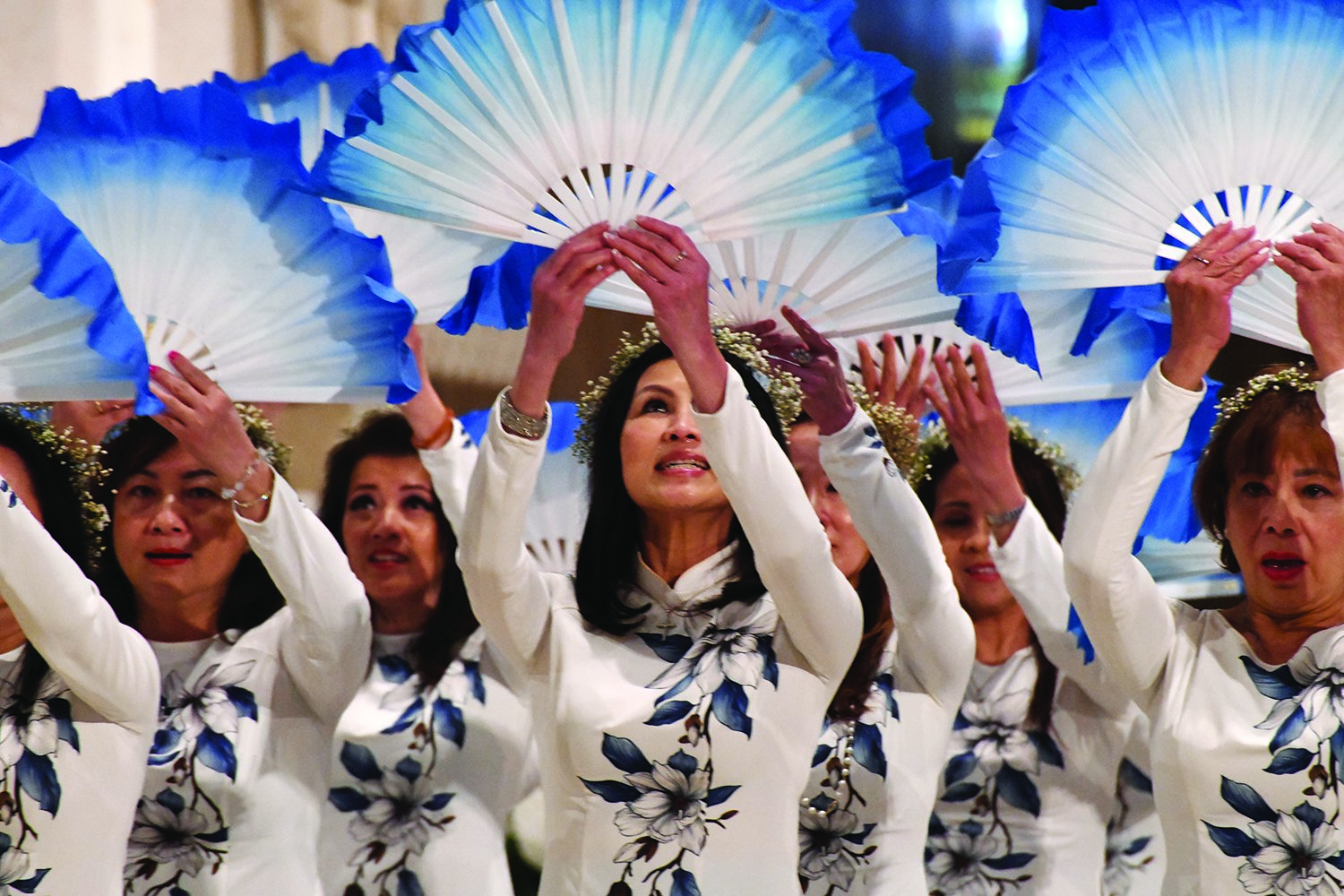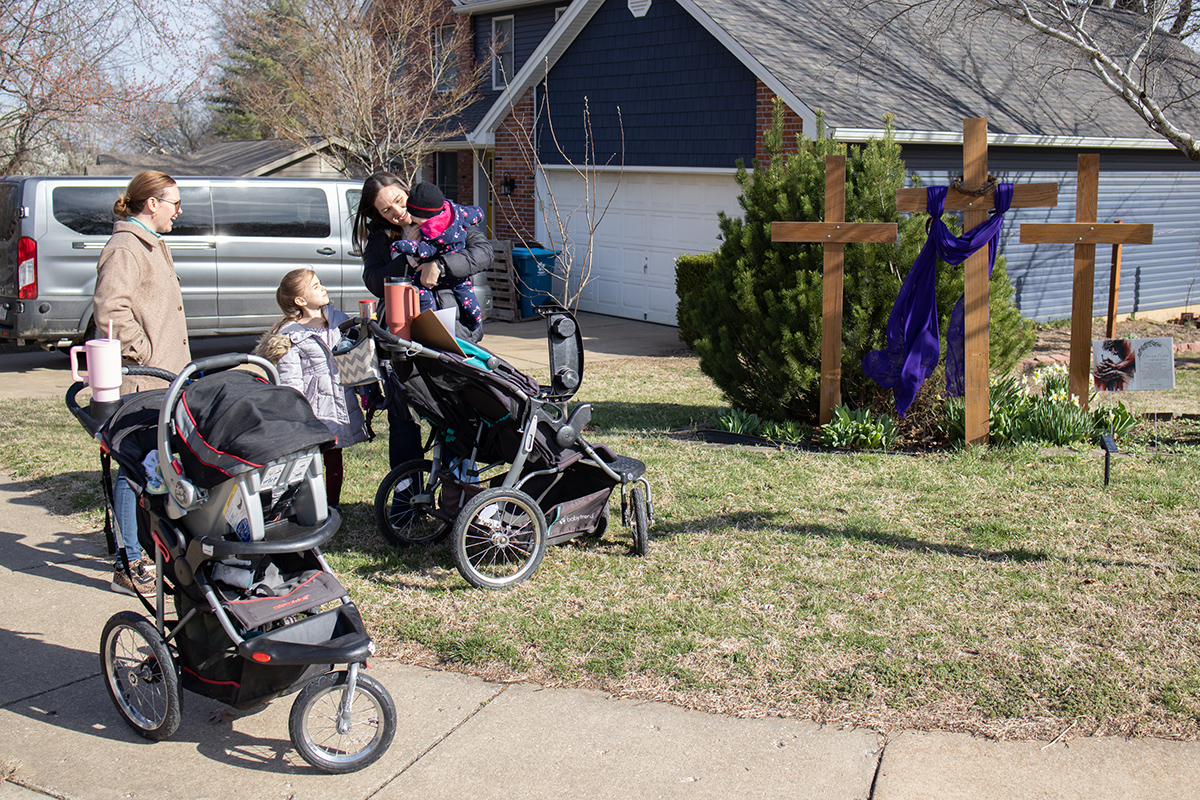‘What we will one day be’
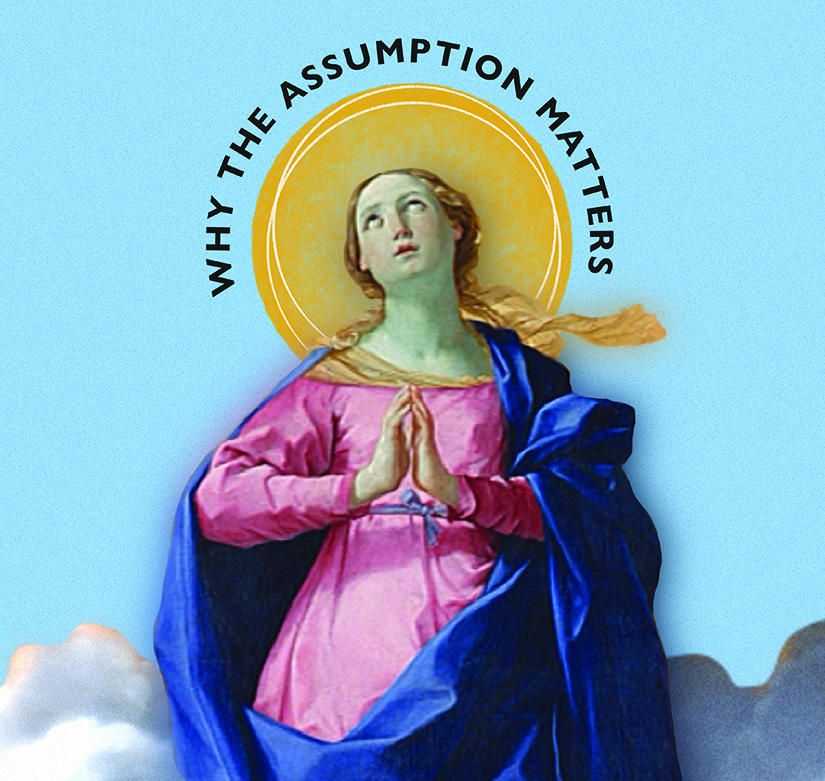
In heaven, Mary serves as an advocate for the faithful on earth, interceding for us with the Lord
The Catholic Church has no shortage of feast days dedicated to the Blessed Virgin Mary, marking important events of her life and some of the many times she has appeared again on earth.
What can we say? We love our mom.
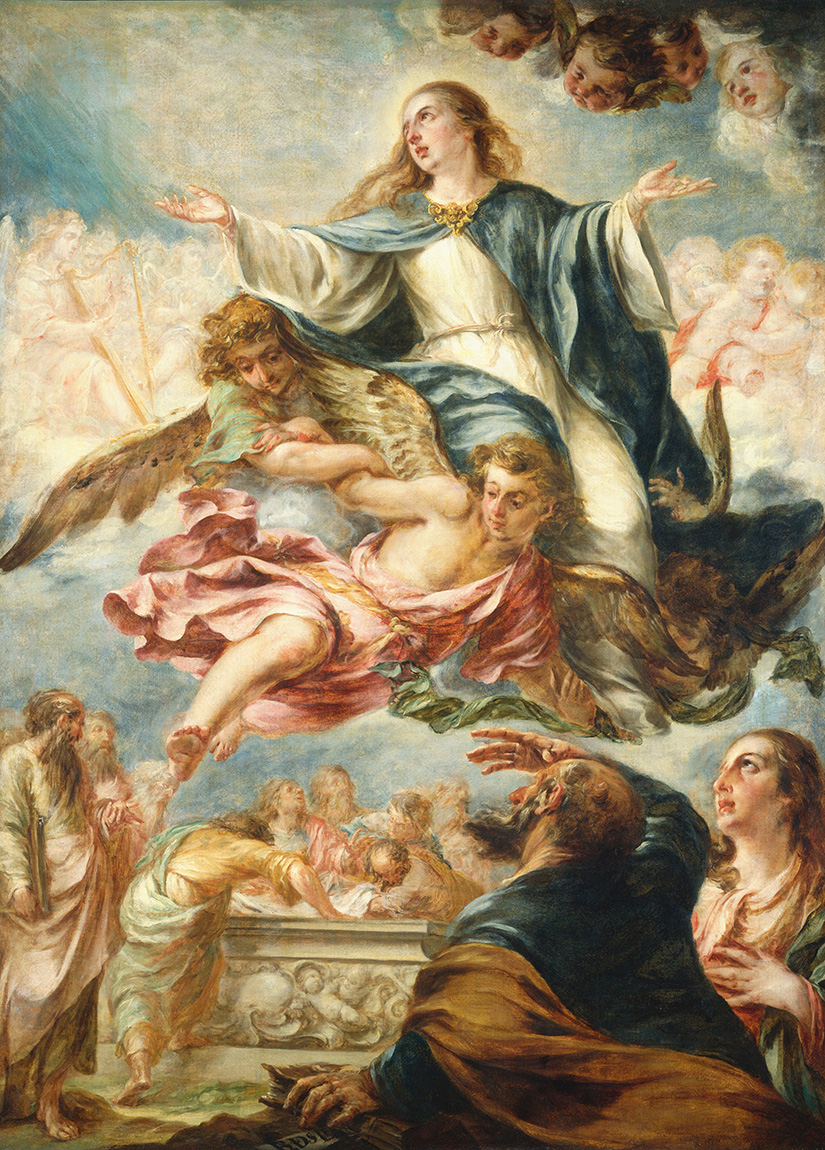
On Aug. 15, the Church celebrates the Feast of the Assumption, when Mary was taken, body and soul, into heaven.
The Church believes that Mary’s body was not subjected to decay because of her unique role as the sinless Mother of God. “Rightly you would not allow her to see the corruption of the tomb since from her own body she marvelously brought forth Your incarnate Son, the Author of all life,” reads the preface of the feast day Mass.
Mary’s assumption is not described in Scripture but was consistently believed by the Church since apostolic times. On Nov. 1, 1950, Pope Pius XII defined the Assumption of Mary to be an infallible dogma of faith. “We pronounce, declare and define it to be a divinely revealed dogma that the immaculate Mother of God, the ever Virgin Mary, having completed the course of her earthly life, was assumed body and soul to heavenly glory,” he stated.
In heaven, Mary serves as an advocate for the faithful on earth, interceding for us with the Lord.
“This motherhood of Mary in the order of grace continues uninterruptedly from the consent which she loyally gave at the Annunciation and which she sustained without wavering beneath the cross, until the eternal fulfillment of all the elect. Taken up to heaven she did not lay aside this saving office but by her manifold intercession continues to bring us the gifts of eternal salvation” (Catechism of the Catholic Church 969).
‘A lofty goal’
Mary’s assumption reminds us of our own final destiny, said Father Scott Jones, pastor of Sts. Teresa and Bridget Parish in St. Louis.
“As Christians, we profess a belief in the resurrection of the dead. This resurrection involves both the soul and the body,” Father Jones said. “Early heretics such as the Gnostics argued that the soul was the only real part of the human person and the body was simply a ‘fleshly prison.’ We reject that notion and believe that the human person consists of a soul and a body; both were redeemed by Christ. Both are by design included in God’s plan for our eternity. By a singular grace, Mary is now what we will one day be.”
Unlike Mary, our bodies will remain on earth until the “last day” when the Lord raises them to the glory of heaven. But the eventual resurrection of our bodies points to the truth that we must treat them as holy gifts from God in our earthly life, too.
The Catechism explains: “In expectation of that day, the believer’s body and soul already participate in the dignity of belonging to Christ. This dignity entails the demand that he should treat with respect his own body, but also the body of every other person, especially the suffering” (CCC 1004).
The dogma of the Assumption was the only time the pope declared an infallible dogma since papal infallibility itself was made a dogma at the First Vatican Council in 1870. The declaration came at a time when the world needed a reminder of the worth and dignity of every human person, Father Jones said.
“Pope Pius declared the bodily assumption of Mary to be a dogma only five years after the liberation of Auschwitz and the end of the Second World War,” Father Jones said. “During those years, millions of people were ranked as physically inferior to a so-called ‘master race’ and exterminated. It went beyond race; persons who were physically or mentally handicapped were also murdered. By declaring the bodily assumption of Mary to be a dogma, Pope Pius reminded the world that every human body is made in God’s image and possesses tremendous dignity. Every human body is part of God’s eternal plan.”
In the apostolic constitution defining the dogma of the Assumption, Pope Pius XII emphasized how Mary’s faithful life and eternal reward can inspire us to desire the same.

“And so we may hope that those who meditate upon the glorious example Mary offers us may be more and more convinced of the value of a human life entirely devoted to carrying out the heavenly Father’s will and to bringing good to others…in this magnificent way all may see clearly to what a lofty goal our bodies and souls are destined,” he wrote.
“We…believe that the human person consists of a soul and a body; both were redeemed by Christ. Both are by design included in God’s plan for our eternity. By a singular grace, Mary is now what we will one day be.”
Mary shows humility, service are ‘secrets’ to heaven, pope says
By Carol Glatz | Catholic News Service
VATICAN CITY — Mary’s assumption into heaven reminds people that they are also called by God to eternal life in heaven through humility and serving him, Pope Francis said.
Before reciting the Angelus prayer last year on the feast of the Assumption Aug. 15, Pope Francis said Mary’s secret is her humility.
“It is her humility that attracted God’s gaze to her,” he said.
“God does not exalt us because of our gifts, our wealth or great skills, but because of humility. God loves humility. God lifts up the one who lowers him or herself, the one who serves,” the pope said.
The pope asked people to reflect and ask: “How am I doing with humility? Do I want to be recognized by others, to establish myself and to be praised, or do I think about serving? Do I know how to listen like Mary or do I want only to talk and get attention? Do I know how to be silent like Mary or am I always chatting? Do I know how to take a step back, defuse quarrels and arguments, or do I always try to stand out?”
Humility is the beginning of having faith by knowing one needs God and needs to make room for Him in their heart and lives, he said.
“Those who remain humble allow the Lord to accomplish great things,” he said.
Mary’s assumption into heaven is a message of hope as it shows “lowliness and service are the secrets for reaching the destination, for reaching heaven,” he said.
The companion Marian feast: The Feast of the Queenship of Mary (Aug. 22)
One week after the feast of the Assumption, the Church marks the feast of the Queenship of Mary. The feast was established by Pope Pius XII in 1954.
In his encyclical “Ad Caeli Reginam” (“To the Queen of Heaven”), Pope Pius quoted St. Alphonsus Ligouri: “Because the virgin Mary was raised to such a lofty dignity as to be the mother of the King of kings, it is deservedly and by every right that the Church has honored her with the title of ‘Queen.’”
>> The Assumption is:
•The fourth Glorious Mystery of the Rosary
•One of three holy days of obligation* devoted to Mary (the others are the feast of the Immaculate Conception on Dec. 8 and the feast of Mary, Mother of God on Jan. 1)
•The name of three parishes in the archdiocese of St. Louis, located in Mattese (south St. Louis County), O’Fallon and New Haven
* Because the Feast of the Assumption falls on a Monday this year, it is not a holy day of obligation.
“Rightly you would not allow her to see the corruption of the tomb since from her own body she marvelously brought forth Your incarnate Son, the Author of all life.”
The Catholic Church has no shortage of feast days dedicated to the Blessed Virgin Mary, marking important events of her life and some of the many times she has appeared … ‘What we will one day be’
Subscribe to Read All St. Louis Review Stories
All readers receive 5 stories to read free per month. After that, readers will need to be logged in.
If you are currently receive the St. Louis Review at your home or office, please send your name and address (and subscriber id if you know it) to subscriptions@stlouisreview.com to get your login information.
If you are not currently a subscriber to the St. Louis Review, please contact subscriptions@stlouisreview.com for information on how to subscribe.

